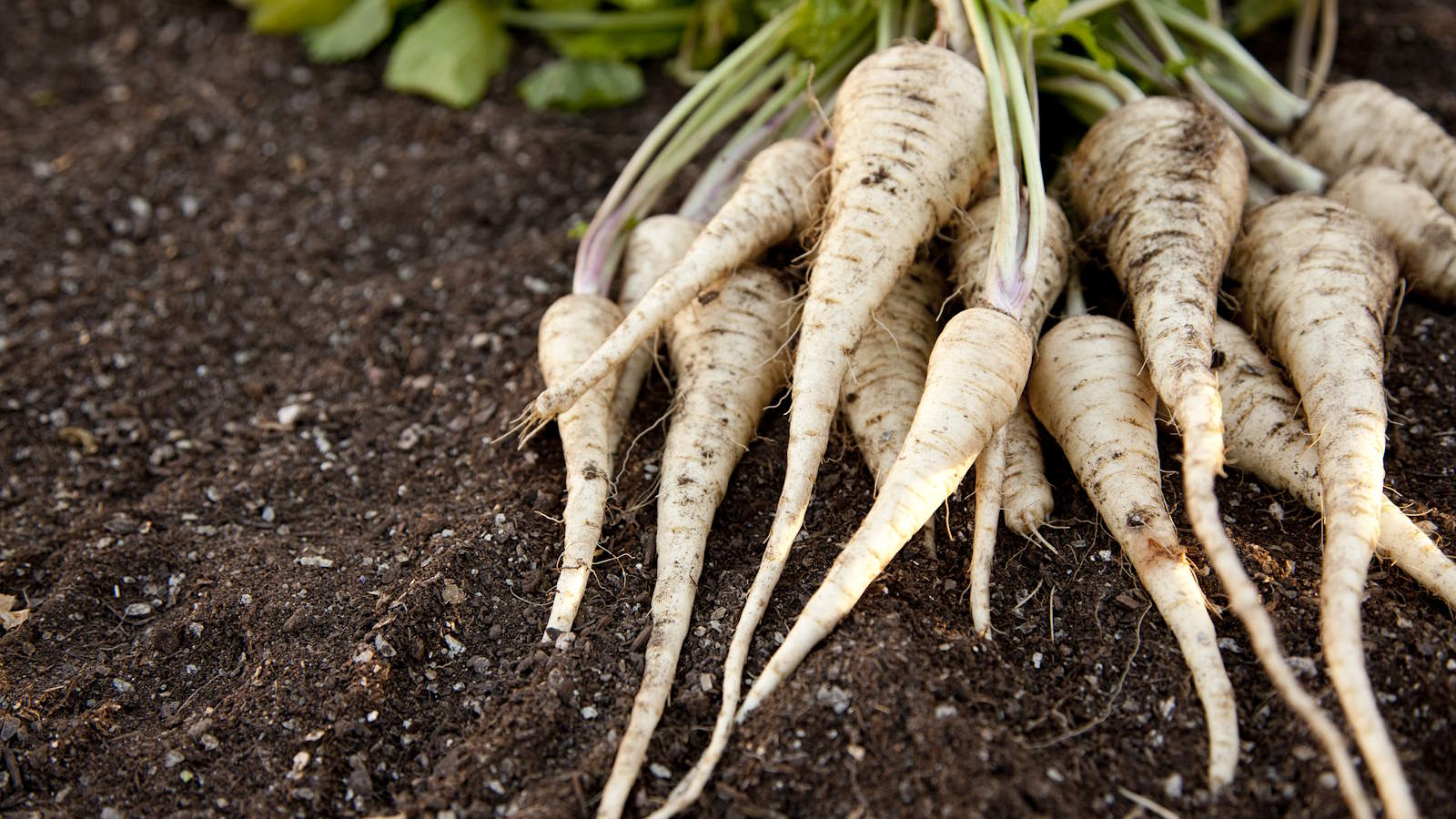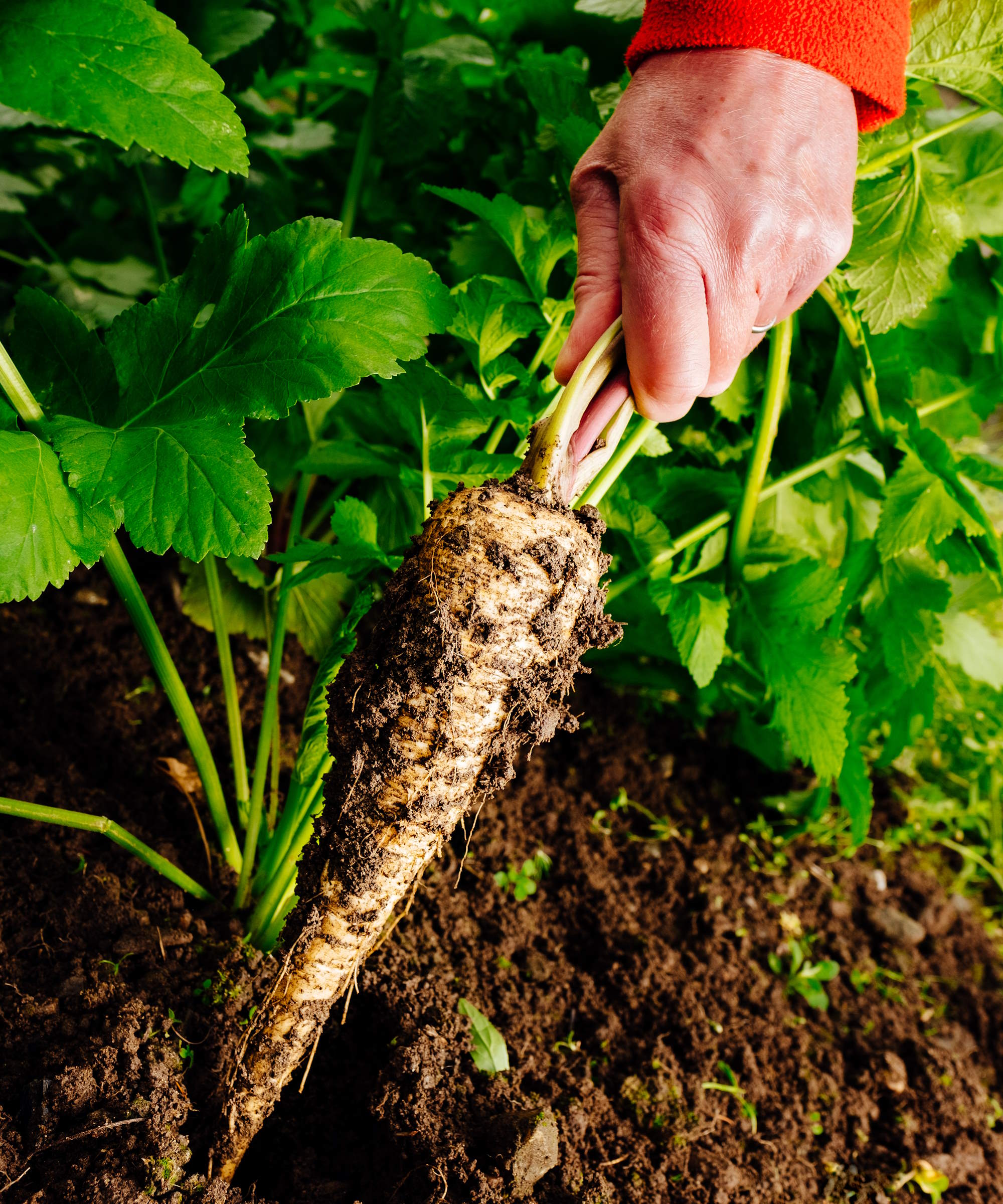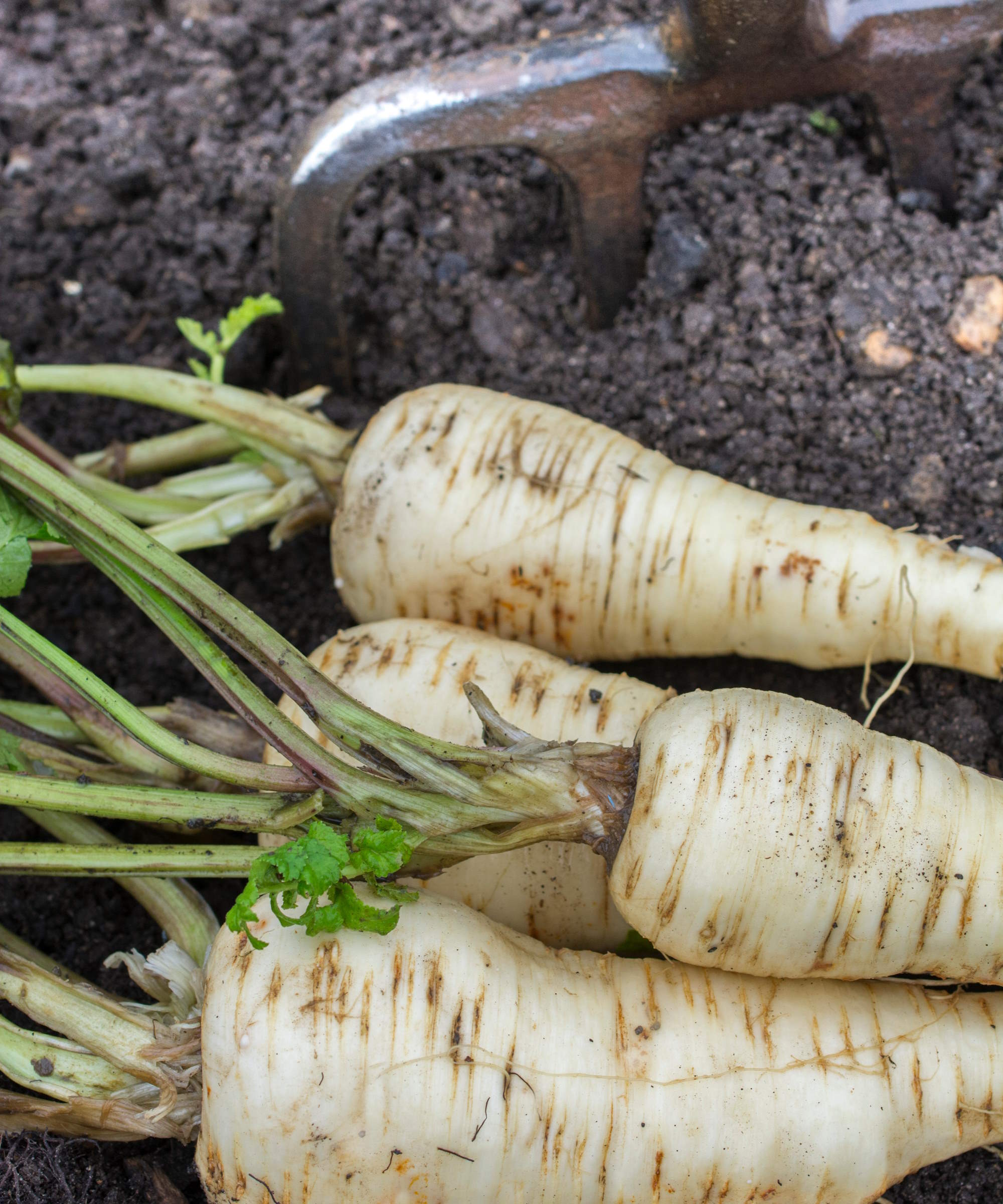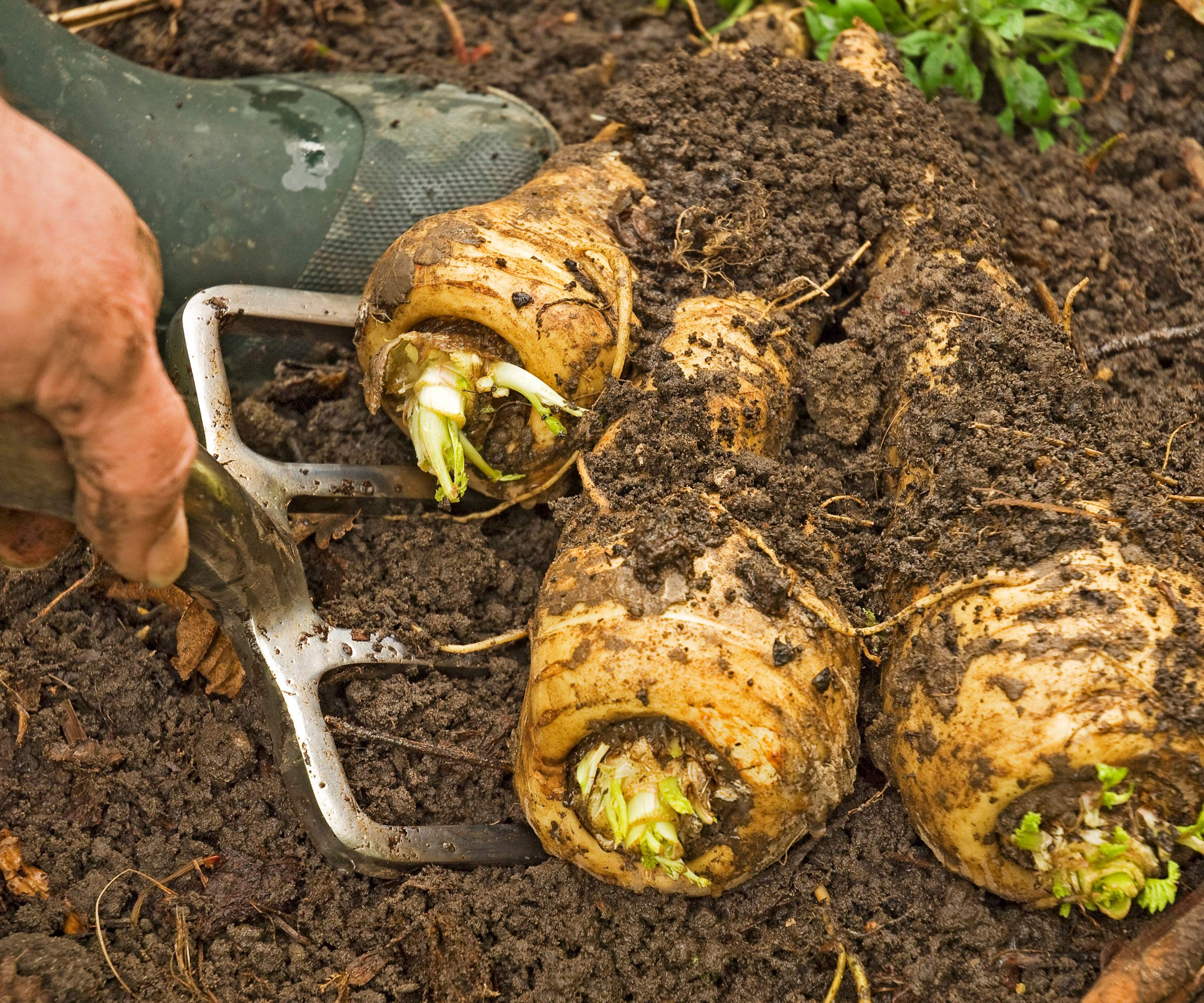
Parsnips are root vegetables grown for their tasty and sweet tap roots that have a wide range of culinary uses. The crop is grown as an annual from seed every year, sown in spring and harvested throughout fall, winter, and even into the new year.
I am a big fan of growing parsnips, having grown and harvested them for many years. I used to grow lots of parsnips in a vegetable garden to sell to visitors over the winter months. And in another kitchen garden I grew and harvested the crops for a local restaurant.
The crop was always grown in large numbers to be harvested successively over the course of several months - the chefs in particular wanted a long season from late fall through into spring. The time to start harvesting parsnips begins when the foliage has died down, with most growers waiting for the first frosts to hit the roots before heading out and lifting them.

When to harvest parsnips
Parsnips have a long growing season in the vegetable garden; it can take at least 120 days for the roots to mature and provide you with a harvest of parsnips. The time to harvest parsnips starts in fall, though it is beneficial to wait until the first frosts have arrived to start lifting the crops.
‘Frost helps sweeten parsnips by converting starches to sugars within the roots,’ says Nancy Awot-Traut, horticultural specialist at Burpee. ‘It is best to harvest after a few frosts, but before the ground freezes.’
Parsnips are very hardy vegetables that can be left in the kitchen garden throughout winter to be harvested as required. They may benefit from a covering of straw to help prevent the ground freezing around them and making harvesting more difficult. If your ground gets waterlogged in a very wet winter, it is best to lift the parsnips to store overwinter and prevent them from rotting in the soggy ground.

How do I know when my parsnips are ready to harvest?
Know your timings when planning a kitchen garden or vegetable garden for the year. Do your research and look at seed packets, as they will show the right sowing and harvesting times for the crop. Parsnips are traditionally sown in spring directly into the ground once the soil has warmed and are ready to harvest from fall onwards.
The key to knowing when to harvest parsnips is the foliage. Once the colder weather arrives, the foliage will start to die back. When the foliage starts turning yellow, it shows that the plant has stopped growing. This, along with the first frosts for your US hardiness zone, should indicate that the time is right to start harvesting your parsnips.
The foliage will ultimately die back completely and your rows of parsnips may need marking so you can identify where the roots are under any snow.

How to harvest parsnips - simple tips to follow
It is very simple to harvest parsnips and, if you have ever harvested carrots, then it is a very similar process - though parsnips can grow larger so it may feel a little bit more of a challenge. The important thing to remember is to use garden tools to lift parsnips out of the ground. Attempting to pull them from the ground by hand is a vegetable harvesting mistake that will almost inevitably end up in you breaking the parsnip.
Always wear gardening gloves, such as these ones available at Amazon, when harvesting parsnips as contact with the foliage can cause a reaction in some people. The sap can cause irritation or burning of the skin, so play it safe and don a pair of gloves to harvest.
I have always found that a simple and common garden fork is the best tool to harvest parsnips with. Place the fork deep into the soil close to the parsnip to loosen it and then gently lever the root out using the prongs. If you get any resistance, then it is better to dig some of the soil away from the surface and try again with the fork. Or try again on the opposite side of the parsnip. Resist the urge to try to yank the parsnip out of the soil by the foliage.
Remove most of the foliage off the top of the root, leaving only around one inch remaining. Parsnips can be harvested regularly as-and-when-required over the winter period. They are very hardy and can be left in the ground and are vegetables to harvest in December and into the new year.
A sturdy and durable garden fork that is ideal for safely harvesting parsnips, as well as turning and lifting garden materials including soil, compost, and mulch

How to store parsnips after harvest
Parsnips can be stored in boxes in a dry and cool location. Do not remove the soil or wash the vegetables, as this will impair how long they can be stored for. Lay the roots in boxes so they are not touching and cover them with moist sand or sawdust. One example of the type of storage container that could be used is this Root Storage Bin, available at Walmart. Store the box at around 32-40F in a cool and dark place, such as a root cellar or basement. When stored in this way, parsnips can be kept for around six months.
Unwashed parsnips can be stored for up to two weeks in the vegetable drawer of a refrigerator, or you can freeze them. It is best to blanch the roots in boiling water for two minutes - this will prevent them losing color and texture when defrosted and cooked. Frozen parsnips stored in this way, or pureed, can keep for up to 12 months.
FAQs
How long can you keep parsnips in the ground?
Parsnips can be overwintered in the ground all the way through until spring. The vegetable is biennial, so it needs to be dug up before the weather warms up and they start growing again. Parsnips left too long in the ground will start to get very woody and then ultimately they will start to flower and set seed in their second year if left to grow. Once the root crop starts to flower, the parsnip will not be good for eating.
Parsnips can be really satisfying to grow - or at least I have found so. True, they may not be one of the fastest growing vegetables you can grow, nor may they be one of the easiest vegetables to grow either, but there is a real satisfaction when you do harvest large and straight roots.
Once you have grown, harvested, and cooked homegrown parsnips you will realize they are so superior to any you get at the grocery store.







